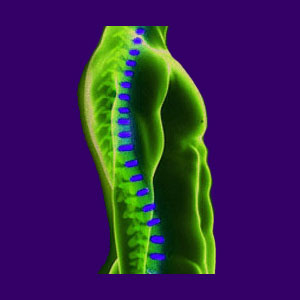
Lordosis back pain is one of the many reasons why a patient may endure chronic symptoms in the neck or lower back. The normal human spine maintains lordotic curves at the cervical and lumbar regions, in order to relieve stress and distribute shock throughout the spinal structures and the body, in general. However, when the lordosis becomes exaggerated or diminished, the curvature may create pain in the muscles or nerves in some unfortunate patients.
The scope of this article will examine how and why lordotic changes might become symptomatic, causing back pain. We will look at both hyperlordosis and hypolordosis conditions and the anatomical problems they may cause.
Lordosis Back Pain Variations
Hypolordosis is defined as a less than typical curvature in the neck or low back. Meanwhile, hyperlordosis is defined as a greater than average exaggerated curvature in the neck or lower back.
In cases of hypolordosis, the actual changes are usually due to muscular spasm and not any structural spinal issues. This condition can often be resolved by finding the source of the tightening muscles and resolving it. In structural instances, injury, congenital or developmental condition may cause a permanently decreased curvature.
Hyperlordosis is often idiopathically developed or acquired after injury. Severe spondylolisthesis can contribute to the incidence of hyperlordosis in the lower back, especially in cases of anterolisthesis.
In cases of structural lordotic change, the size of the neuroforamen or central canal may be decreased, potentially causing neurological symptoms to occur.
Lordosis Spine Pain Scapegoat
Most cases of atypical lordosis are not harmful, painful or problematic in any way. In fact, some cultures prize a hyperlordotic lumbar spine for its beauty.
Mild to moderate lordotic alteration is certainly not likely to create the right circumstances for pain and most patients who are pronounced with symptoms due to minor front to back spinal curvature change may be misdiagnosed.
However, advanced and extreme scenarios of unusual lumbar lordosis or cervical lordosis can enact pain in the surrounding soft tissues, or more commonly, can create pinched nerves throughout the affected region. It should be noted that these circumstances are rare.
Lordosis Back Pain Diagnosis
Lordosis is an easily diagnosed condition which will show up clearly on even the most basic spinal x-rays. However, in order to see if any neurological structures are affected, advanced testing of the nerves must be done, usually after preliminary spinal MRI.
Doctors treating patients who demonstrate mild to moderate unusually lordotic spines, but show no other obvious structural spinal issues, often implicate the curvature as part of their diagnostic theory.
In most cases, this is unenlightened and incorrect, since chronic back pain is seldom due to structural issues, except in the most extreme scenarios. It should be noted that unusually severe cases of lordosis can be painful and may even contribute to spinal instability.
Lordosis Neck or Back Pain Advisory
If you have persistent back pain which has been blamed on a minor or moderate hyperlordotic state, you should consider that the diagnosis may be completely off the mark. This is also true for patients who maintain a decreased lordotic curvature in their spines. Lordosis is typically nothing to fear, unless the syndrome becomes a real issue due to central or foraminal spinal nerve tissue compression.
The spine is very flexible, not just in its movement, but also in its ability to adjust to variations in curvature. Remember this especially if your hyperlordosis or hypolordosis is mild, but is blamed for sourcing severe and chronic pain.





